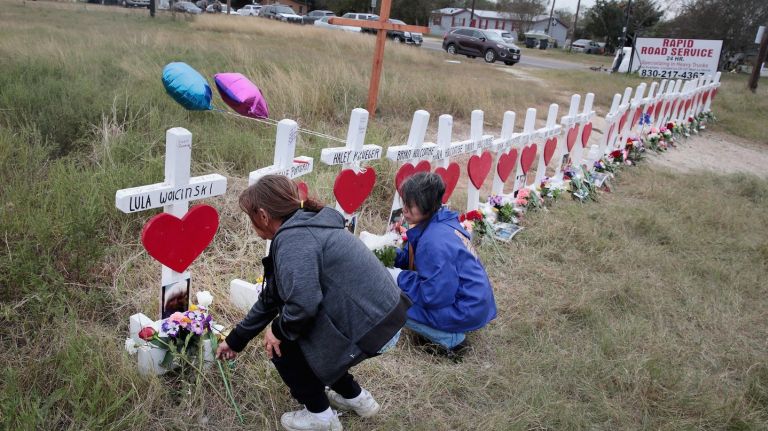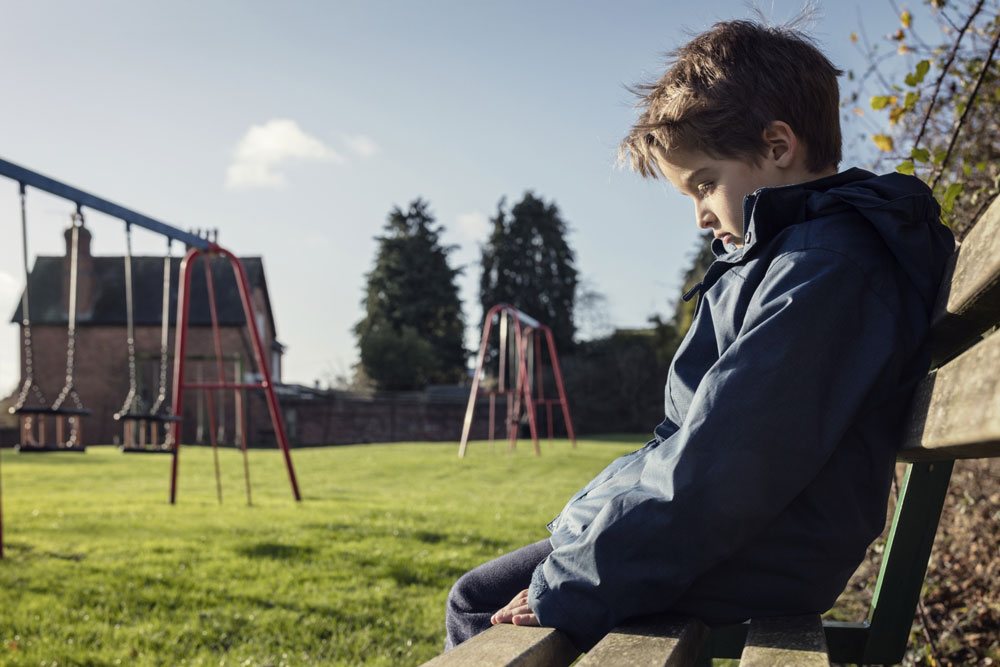
by North Shore Child & Family Guidance Center | Nov 21, 2017 | Blog
The holiday season is fully upon us, with the push to buy, buy, buy at its peak. Traditional and social media are flooded with ads for the latest and greatest toys and technology. People slept overnight to get the best Black Friday deals, and many shopped on Thanksgiving day itself. The message is that new “stuff” is what the season is all about.
It’s normal for youngsters to be excited at the prospect of receiving a bounty of gifts and gadgets in the coming month. But is the message that “more is better” the one we want our kids to take to heart?
Following are some helpful practices that you can use all year long to help your children cultivate gratitude.
- Have you been slipping on your own gratitude practice? Your kids notice what you do, so don’t let the “little” things slide. Be a role model. Remember to say thank you when someone holds the door open or to praise your kids when they do something kind and generous. Instead of telling them to be grateful, focus on showing them how it’s done.
- It is OK, however, to remind your kids in a gentle and loving way that you appreciate when they acknowledge what you or others do for them. It’s easy for family members to take each other for granted, so when you put a nice meal on the table or do their laundry, encourage them to get into the habit of saying thanks—and remember to do the same for them.
- It’s not unusual for family and guests to have given thanks on Thanksgiving, but why make it a once-a-year practice? Each night at dinnertime, ask your kids what they were grateful for that day, and share your own feelings of gratitude.
- Tired of the same old routine of running yourself ragged trying to find that popular holiday toy and then collapsing at the end of an exhaustive day of shopping? Make it a season of true giving by cutting down on the shopping mania and instead volunteering all through the holiday season. Look into what houses of worship or food kitchens are doing, and bring along the kids to help serve others. It’s a powerful reminder that not everyone has family to be with or food to eat, and that they have the power to make a difference.
- When gifts do begin arrive from aunts, uncles and other friends and family, make a fun project out of writing thank you notes. The practice provides another lesson of expressing gratitude to someone who has done something thoughtful for them.

by North Shore Child & Family Guidance Center | Nov 16, 2017 | Blog
With Thanksgiving just one week away, the holiday season is about to launch into full gear. For all parents and caregivers, this joyous time can also be filled with lots of tension and anxiety. Add to that dealing with children or teens with mental health issues, and it all can seem overwhelming.
Here are 10 tips on making the holiday season more about giving and celebrating than about consumerism and stress.
- Are you hosting Thanksgiving this year? Make it a collaborative effort and ask each guest to bring a dish—but find out ahead of time what they’re planning so you don’t end up with five dishes of Brussel sprouts!
- Thanksgiving is known not only for stuffing but for overstuffing. Avoid a bloated belly by eating some very small meals before the official feast starts. Starving yourself will only lead to excessive consumption.
- Put the “thanks” into Thanksgiving by asking each member of your festivities to mention at least one thing that they are grateful for this year.
- Instead of buying holiday gifts for every relative, offer to donate to a cause in their name. That way, Aunt Alice doesn’t get yet another pair of gloves or a scarf, and her favorite charity will be a winner!
- Speaking of generosity, make a date with your children to go through their old toys and donate ones they no longer use. Of course, make sure they are in great condition. To find a place to donate near you, ask your friends or join a Facebook parent’s group. They’ll be sure to know how to find a good destination for your gently used items.
- Shop early and/or shop online. If you’re worried about the kids seeing packages come to the house, ask a friend if you can send them to her house instead. Also, if you are sending packages to distant locales, have them sent directly to the recipient’s home rather than to you first.
- Worried about staying within your holiday budget? First, set realistic expectations with your kids. Even if they still believe in Santa, you can let them know that Ole St. Nick has a limited number of gifts and a long list to cover. For bargain shopping, sign up at your favorite retailers for their e-newsletters to get discount codes, or visit sites like couponcabin.com, RetailMeNot.com or moneysavingmom.com. Also consider signing up for a free trial of Amazon Prime, so you’ll get free shipping on your holiday gifts.
- Be selective about what events and parties you attend. It may seem like fun when you get a dozen party invites, but just a few will suffice—and you won’t risk burning out or overindulging on too much eggnog or cookies.
- Plan time to spend outdoors with your family. Bundle up if it’s cold and get those bodies moving! It’s a great way to spend some time refreshing your spirits and bonding with your kids.
- If you or your children have experienced a loss this year, don’t ignore it or pretend that everything is fine. Even though it’s a season of celebration, it’s normal and necessary to allow feelings of sadness into your holiday. Share memories of your loved ones and let the tears flow. There’s sure to be some laughter in the mix, too.

by North Shore Child & Family Guidance Center | Nov 15, 2017 | In The Media
From Newsday, Letters, Nov. 12 2017
The Sutherland Springs, Texas, killing of 26 innocents, including eight children and a pregnant mom, is a grim reminder and prelude to the fifth anniversary of the Sandy Hook shootings [“Church massacre,” News, Nov. 6].
At the same time, as President Donald Trump paid his respects to the fallen, ordering flags flown at half-staff, he was quick to label the tragedy as a mental health problem. This is despite the fact that he advocated for a repeal-and-replace national health insurance policy that would strip away insurance coverage parity for mental health care.
When the president advocates for limiting access to care, it compounds the public health challenges of mental illness.
Think about it: After the Sandy Hook shootings, there was not one parent who was able to escape the tyranny of imagining his or her child being killed in the neighborhood school. Now, Sutherland Springs affirms that the 2015 church shooting in Charleston, South Carolina, is not isolated.
Our leaders can support the constitutional right to bear arms while taking steps to prevent gun violence and passing legislation that supports the emotional well-being of all of our citizens.
Andrew Malekoff, Long Beach
Editor’s note: The writer is the executive director of the nonprofit children’s mental health agency North Shore Child and Family Guidance Center in Roslyn Heights.
View Article
by North Shore Child & Family Guidance Center | Nov 15, 2017 | In The Media
“From News 12 Long Island, Nov. 11, 2017”
WOODBURY – Facebook’s first president Sean Parker said Wednesday that the social media giant was designed to exploit “human vulnerability.”
“We needed to sort of give you a little dopamine hit every once in a while because someone liked or commented on a photo or a post or whatever,” Parker said at an Axios event in Philadelphia. “It’s a social validation feedback loop. It’s exactly the kind of thing that a hacker, like myself, would come up with because you’re exploiting a vulnerability in human psychology.”
He went on to say the “[The inventors] understood this, consciously, and we did it anyway.”
Parker says he now wonders about the consequences of Facebook on future generations.
“God only knows what it’s doing to our children’s brains,” he said.
Mental health experts say it’s having a negative impact. Andrew Malekoff, of the North Shore Child and Family Guidance Center, says those overly absorbed in the site often become isolated, anxious and disconnected.
Malekoff says parents should consider putting limits on the time their children spend on social media.
View Video

by North Shore Child & Family Guidance Center | Nov 9, 2017 | Blog
If your child has a fever of 104, you know it’s time to take him or her to the doctor. But how do you know if it’s time to take your child to a therapist?
Most children and teens will experience anger, anxiety and sadness at times. It’s part of growing up. They might have a fight with a friend, or be struggling with a subject at school, or question whether they fit in with their peers. Hormonal changes can also create moodiness and irritability. And bullying can also be a factor.
So, while it’s typical for your youngster to have times of struggle and rebellion, how is a parent to know whether it’s time to seek out professional help?
“Children at different developmental stages express their feelings differently than adults,” says Regina Barros-Rivera, Associate Executive Director at North Shore Child & Family Guidance Center. “Sadness may be displayed by aggression, agitation or moodiness. A child may withdraw, increase sleep or be unable to sleep, or have a poor appetite.”
Changes in behavior surrounding school are another important factor. “It could involve a change in attitude about school work, inconsistency with getting up on time or, even more critical, school refusal,” says Barros-Rivera.
According to the National Association of School Psychologists, each year approximately 2%–5% of children refuse to go to school due to anxiety or depression. School refusal could be a sign of social anxiety, says Barros-Rivera, or it could indicate an increase in difficulty handling more academic demands. Bullying may be a factor. School refusal can also represent the onset of depression.
Here are some warning signs that your child may need professional help:
Does your child or teen…
- Often express feeling anxious or worried
- Seem moody or irritable much of the time
- Get angry and argue frequently
- Have difficulty making/keeping friends
- Have no interest in things they used to enjoy
- Say they’re sick often but with no physical cause
- Lie consistently
- Use drugs or alcohol
- Have little energy
- Have periods of intense, excessive activity
- Self-harm (cutting, burning, pulling hair)
- Harm others or express the desire to harm others
- Engage in risky, destructive behavior
- Express suicidal thoughts
- See or hear things others do not
Once you’ve determined that it’s time to call a therapist, how do you find the right one for your child? One place to start is by asking for references from your child’s school guidance counselor. Also, if you have friends who have used a therapist for their child, ask for their recommendations. Make sure the therapist or agency has specific experience dealing with young people.
Help is available! Call North Shore Child & Family Guidance Center at (516) 626-1971 for more information.
Sources: www.nasponline.org




